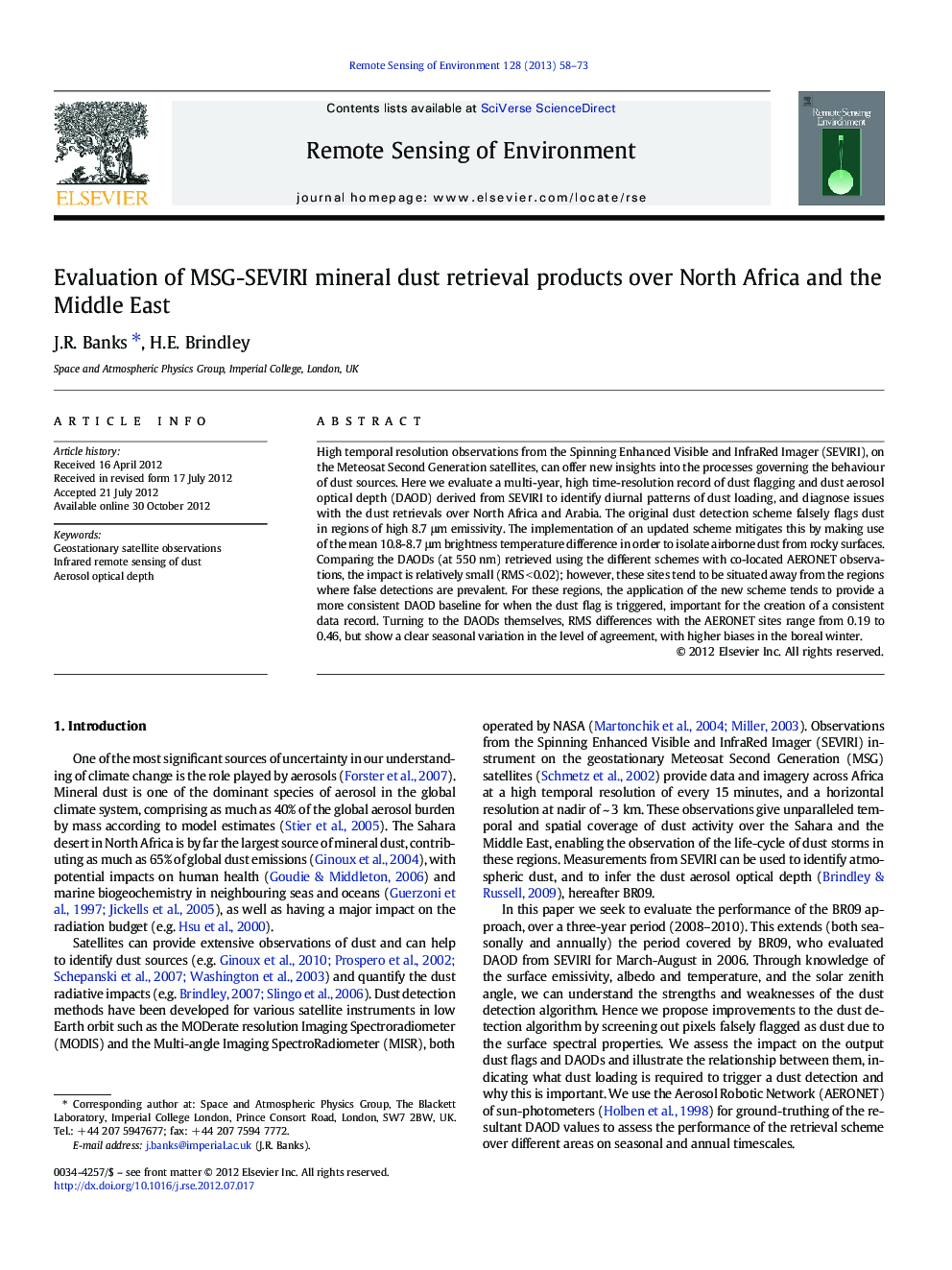| Article ID | Journal | Published Year | Pages | File Type |
|---|---|---|---|---|
| 4458959 | Remote Sensing of Environment | 2013 | 16 Pages |
High temporal resolution observations from the Spinning Enhanced Visible and InfraRed Imager (SEVIRI), on the Meteosat Second Generation satellites, can offer new insights into the processes governing the behaviour of dust sources. Here we evaluate a multi-year, high time-resolution record of dust flagging and dust aerosol optical depth (DAOD) derived from SEVIRI to identify diurnal patterns of dust loading, and diagnose issues with the dust retrievals over North Africa and Arabia. The original dust detection scheme falsely flags dust in regions of high 8.7 μm emissivity. The implementation of an updated scheme mitigates this by making use of the mean 10.8-8.7 μm brightness temperature difference in order to isolate airborne dust from rocky surfaces. Comparing the DAODs (at 550 nm) retrieved using the different schemes with co-located AERONET observations, the impact is relatively small (RMS < 0.02); however, these sites tend to be situated away from the regions where false detections are prevalent. For these regions, the application of the new scheme tends to provide a more consistent DAOD baseline for when the dust flag is triggered, important for the creation of a consistent data record. Turning to the DAODs themselves, RMS differences with the AERONET sites range from 0.19 to 0.46, but show a clear seasonal variation in the level of agreement, with higher biases in the boreal winter.
► We evaluate dust detection and aerosol optical depth (DAOD) retrievals from SEVIRI. ► A multi-year period is studied, over North Africa and the Middle East. ► Surface features can falsely trigger dust detections, these can be filtered. ► Filtering provides a more consistent baseline of DAOD at which dust is detected. ► This SEVIRI record is compared against AERONET and CALIPSO observations.
